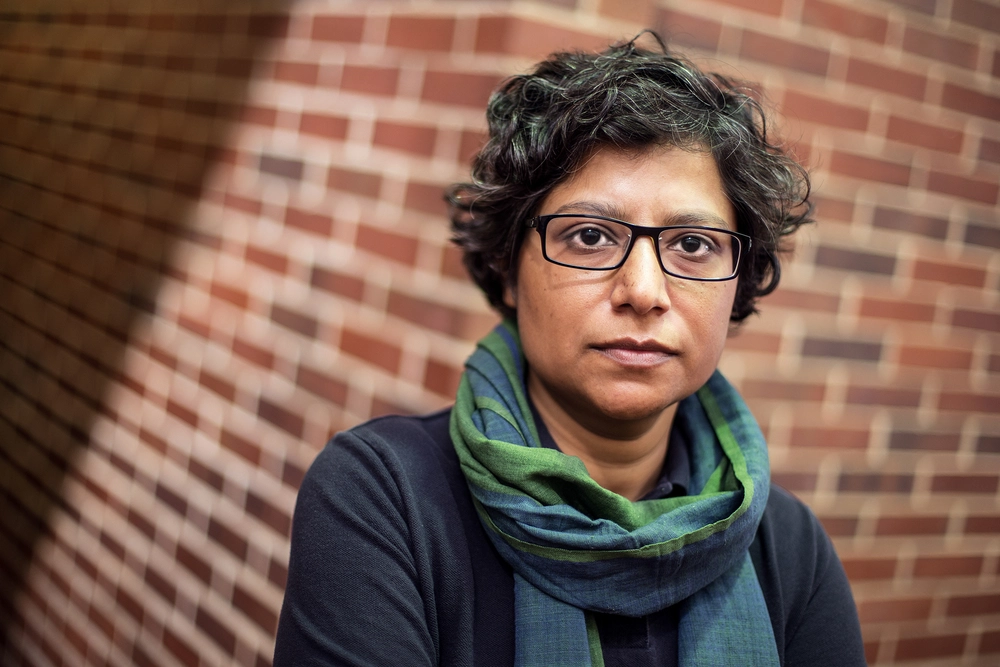
Movie fans and scholars alike will soon be able to visualize an entangled network of Indian film stars, the history of Indian cinema, and the trajectory of Bollywood as it shot towards mainstream fame with an interface professor Rini Mehta is developing through a fellowship with the National Center for Supercomputing Applications.
India’s star-centric and dynasty-heavy movie scene, where entire families are often involved in the film industry, and parents pass down their stardom to their children, is one area that Mehta believes can be explored especially well through multimedia tools.
“This gives me some unique possibilities where I can visualize a powerful network of people, and create a digital network out of that,” Mehta said. “I can show dynasties growing and evolving.”
One of the tools being developed will allow users to track connections between individuals in the film industry by representing each actor, producer, and director as a node, with lines drawn between them to denote relationships, something Mehta said is particularly powerful in Indian cinema.
The fellowship provides opportunities for funding and collaboration for researchers at the university to work with NCSA staff on long-term projects.
It’s an aspect of digital humanities—a term given to how scholars make use of digital tools to visualize and disseminate their research—that is particularly appealing to Mehta, given the captivating visuals and music showcased in Indian cinema.
Mehta said she wants to diverge from the precedent set by literary scholars and critics, who traditionally use only articles and books to communicate their work, and instead use digital tools and multimedia elements that allow users to manipulate online networks, maps, and graphs and see the full cinematic effects of Indian films.
“The story of Indian cinema can't be told in words, because Indian cinema has a language. Not the language we speak in, but the way it expresses itself,” Mehta said.
According to Mehta, the vivid scenes of Bollywood have left a definite imprint on Indian society, as well as the Indian diaspora living overseas.
The ornate weddings portrayed in Bollywood films, often featuring pulsing music, painted elephants draped in vibrantly colored fabric, brides covered in jewelry and glittering fabric, and elaborately choreographed dance numbers have bled their way into mainstream Indian culture.
“Weddings in Bollywood movies are these elaborate affairs, a form of which existed in some parts of India, but Bollywood turned it into something that was totally blown out of proportion,” Mehta said.
Mehta said Indian Cinema in Context will be able to create digital maps allowing users to track the history of Bollywood and how it exploded in popularity and became a familiar name well beyond India’s borders.
Mehta attributes the explosive growth in popularity of Bollywood movies to the spread of the Indian diaspora, the rise of video cassettes and the internet, and the glamour and unfamiliarity of Bollywood to westerners.
“It is exotic. It has high entertainment value. One of the things that Bollywood has done very well is that it has this omnibus, all-encompassing genre,” Mehta said. “There is some pathos there, there's some comedy there, there's music, there's championing of traditions, pretty much everything is happening. So Bollywood presents a microcosm of the world so that everybody goes out of the theater feeling happy.”
The Indian film industry grew by 27 percent in 2017 according to a report by EY and the Federation of Indian Chambers of Commerce & Industry, and the term “Bollywood," a word coined in the 1970s, now generates around half a billion results when searched on on Google.
Mehta’s class, Indian Cinema in Context, ballooned from 45 students in 2011 to now more than 200 students, with seats in the class now filling up soon after course registration begins.
“When people in the west encountered Bollywood, it was something completely different. It was different from Hollywood and the other films they were used to,” Mehta said. “Bollywood was something that offered something completely different in entertainment value, and that different aesthetic really appealed.”
By Heather Schlitz